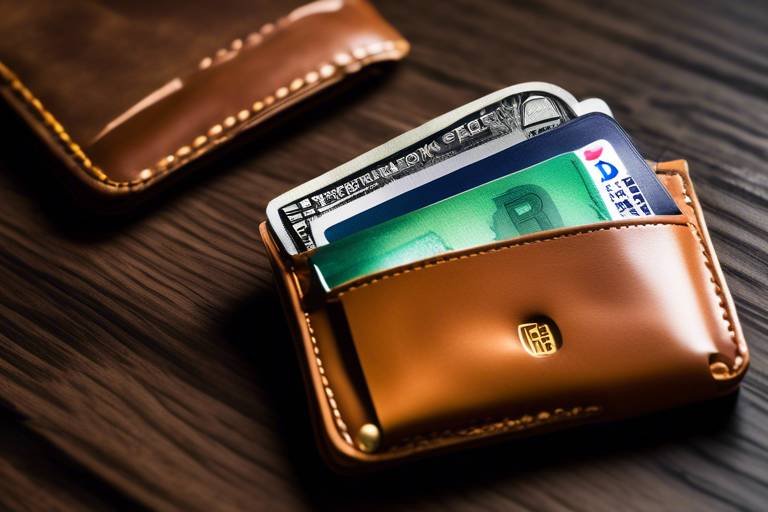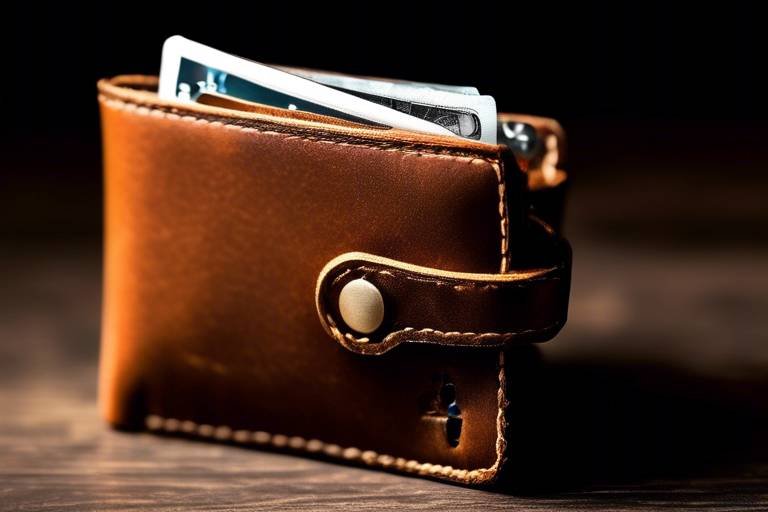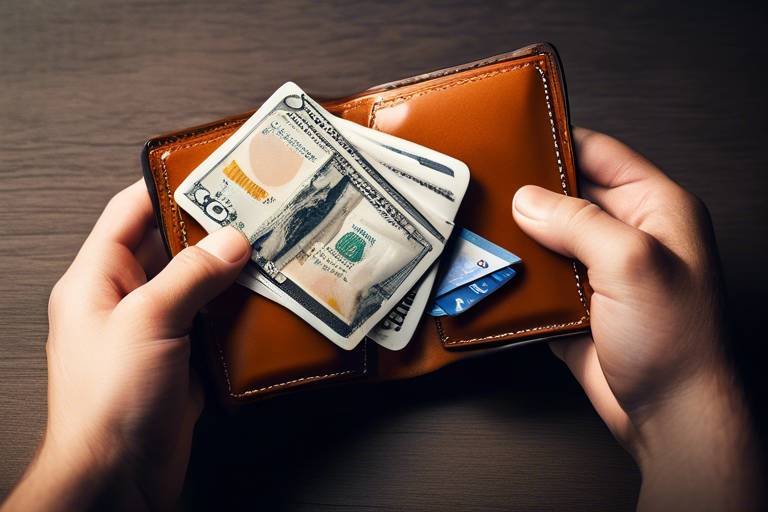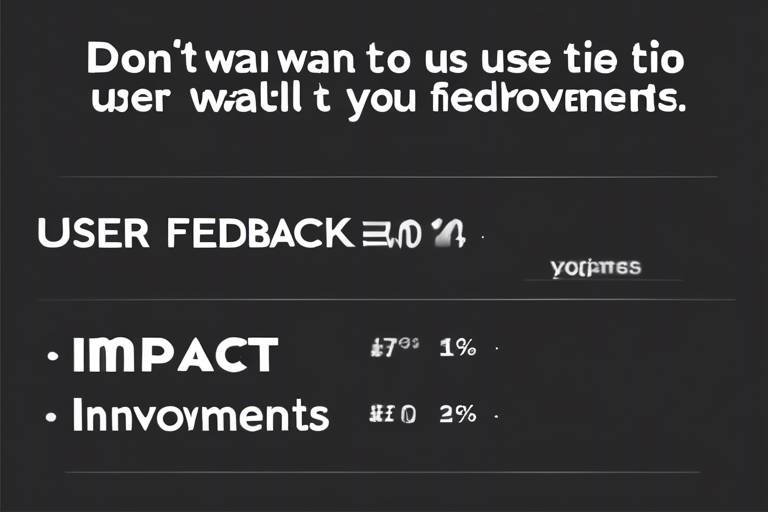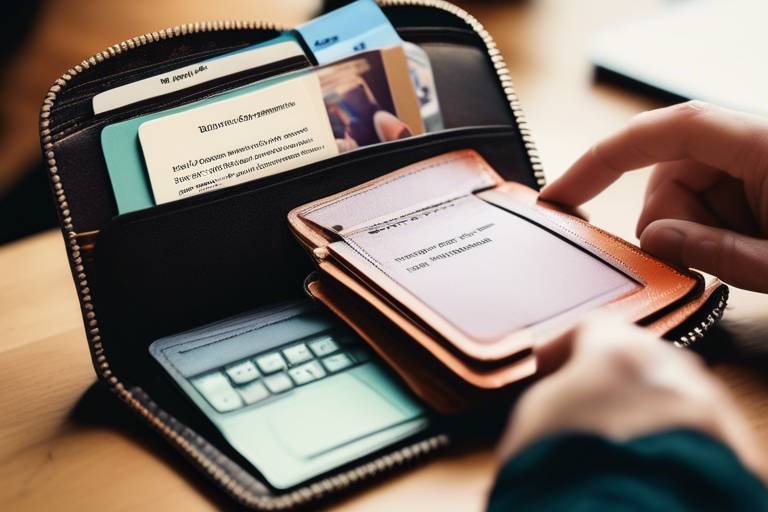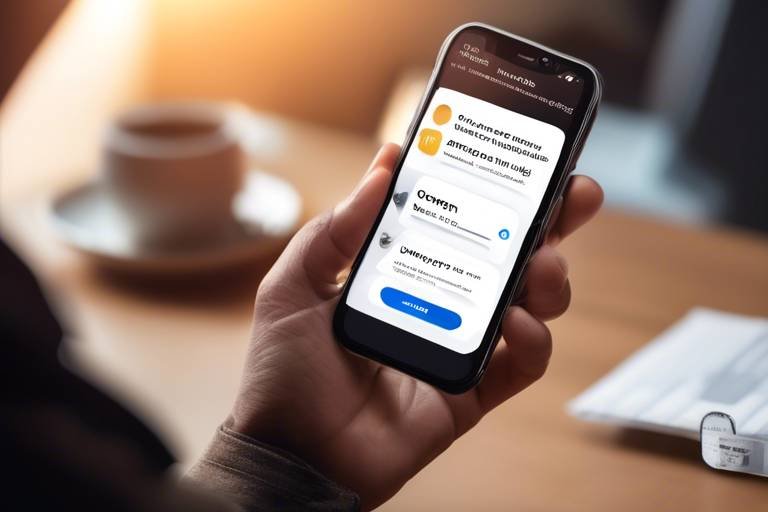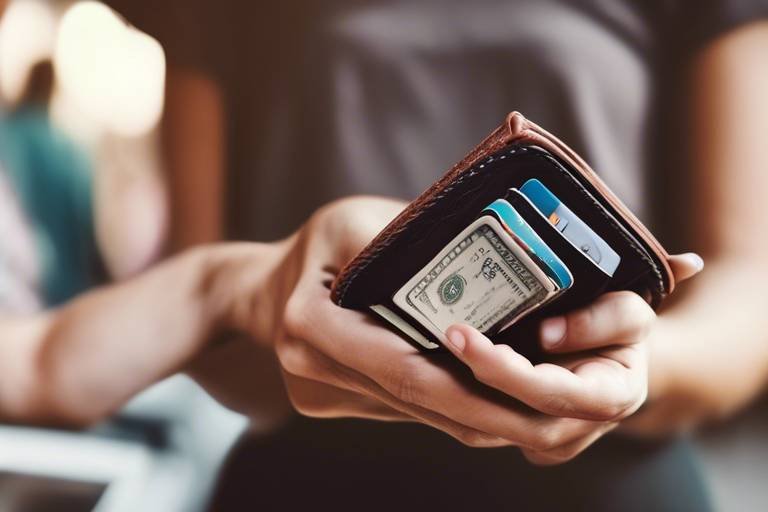The Role of Wallets in Preventing Crypto Fraud
In the ever-evolving world of cryptocurrencies, the importance of wallets cannot be overstated. These digital tools not only serve as a safe haven for your assets but also play a crucial role in preventing crypto fraud. Imagine your wallet as a high-tech vault, designed to keep your digital treasures secure from prying eyes and malicious attacks. With the rise of cybercrime, understanding how wallets function and the best practices to utilize them is essential for anyone looking to navigate the crypto landscape safely.
Crypto wallets come in various forms, each offering unique features that cater to different user needs. From hardware wallets that resemble USB drives to software wallets that reside on your mobile devices, the choices can be overwhelming. But fear not! By grasping the functionalities of these wallets, you can make an informed decision that not only enhances your security but also minimizes the risk of falling victim to fraud.
One of the most significant aspects of wallet security is the management of private and public keys. Think of your public key as your email address—it's okay to share it with others so they can send you funds. However, your private key is like your email password; it must be kept secret at all costs. If someone gains access to your private key, they can easily steal your cryptocurrencies, leaving you with nothing. Therefore, safeguarding your private key is paramount in the fight against fraud.
Moreover, implementing best practices for key management can significantly reduce your risk. For instance, using strong, unique passwords and enabling two-factor authentication adds an extra layer of protection. It's like locking your front door and then installing a security system—you're making it much harder for intruders to get in.
Regular backups of your wallet information are also vital. Imagine losing your wallet and having no way to recover your cash; the same applies to your crypto assets. By backing up your wallet, you ensure that, in the event of loss or theft, you can recover your funds and continue your crypto journey without a hitch. This simple step can save you from potential heartache and financial loss.
When selecting a wallet, it's essential to look for features that enhance security and usability. Multi-signature support, for example, requires multiple private keys to authorize a transaction, making it significantly harder for fraudsters to gain control. Additionally, user-friendly interfaces can make managing your assets a breeze, allowing you to focus on what really matters—growing your investments.
In conclusion, wallets are not just storage solutions; they are your first line of defense against crypto fraud. By understanding the various types of wallets, implementing best practices for security, and staying informed about common scams, you can protect your assets and enjoy the benefits of cryptocurrency without fear. Remember, in the world of digital currencies, knowledge is power, and a well-chosen wallet is your best ally.
- What is a crypto wallet? A crypto wallet is a digital tool that allows you to store, send, and receive cryptocurrencies securely.
- Are hardware wallets safer than software wallets? Generally, yes. Hardware wallets store your private keys offline, making them less vulnerable to online attacks.
- How often should I back up my wallet? It's recommended to back up your wallet regularly, especially after significant transactions or changes to your wallet.
- What should I do if I suspect my wallet has been compromised? Immediately transfer your assets to a new wallet and change any associated passwords.
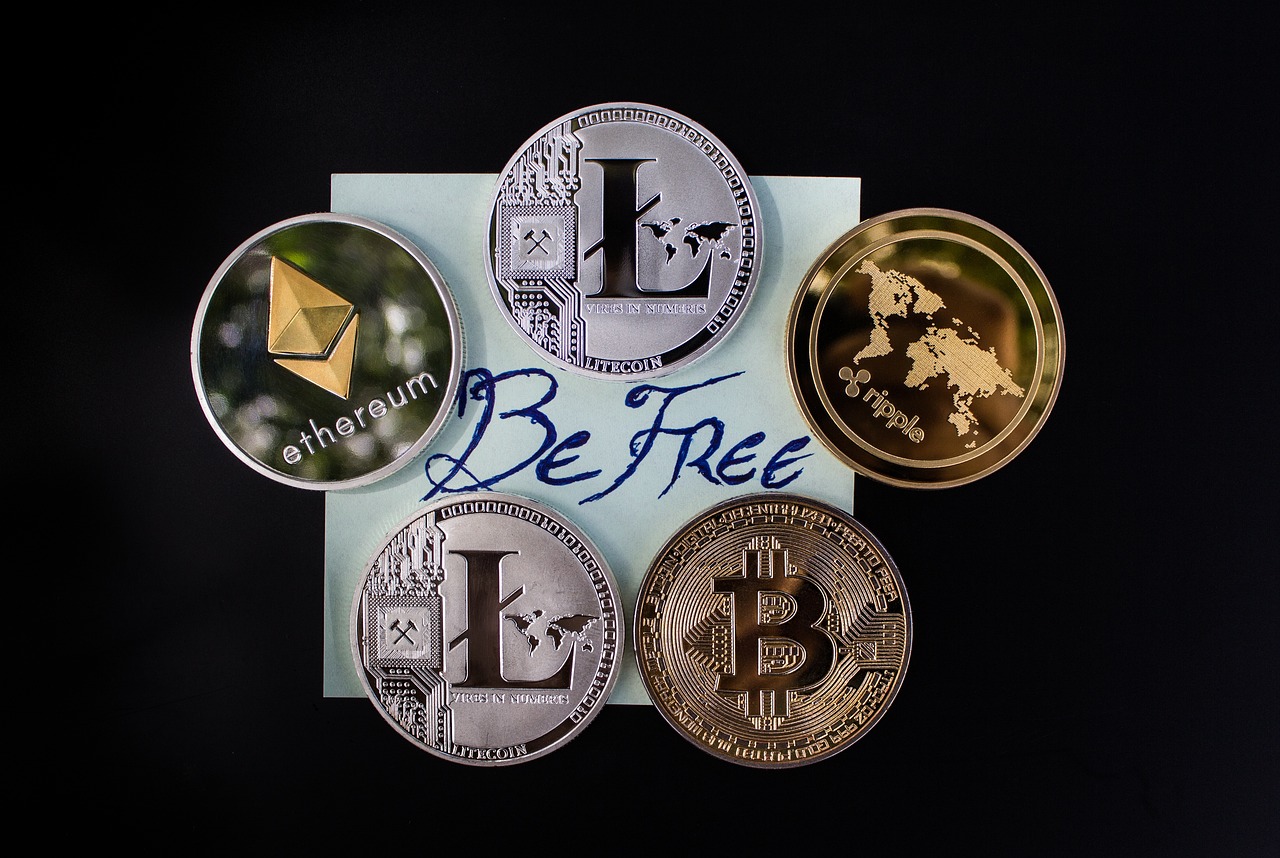
Types of Crypto Wallets
When it comes to securing your cryptocurrencies, understanding the different types of crypto wallets is crucial. Each wallet serves a unique purpose and offers varying levels of security and accessibility. Essentially, wallets can be categorized into three main types: hardware wallets, software wallets, and paper wallets. Each type has its own advantages and disadvantages, and knowing these can help you choose the right one for your needs.
Hardware wallets are physical devices that store your private keys offline. Think of them as a safe for your digital assets. They offer a high level of security because they are not connected to the internet, making them less susceptible to hacking attempts. Popular hardware wallets include devices like the Ledger Nano S and Trezor. However, they can be somewhat expensive, and if you lose the device without a backup, you might lose access to your funds.
On the other hand, software wallets are applications or software programs that can be installed on your computer or smartphone. They come in two varieties: desktop wallets and mobile wallets. Desktop wallets provide more security than mobile wallets but require you to be cautious about malware and viruses on your device. Mobile wallets, while more convenient for everyday transactions, can be vulnerable to theft if your phone is lost or compromised. Some popular software wallets include Exodus and MyEtherWallet.
Then we have paper wallets, which are essentially just printouts of your public and private keys. They are a form of cold storage, meaning they are completely offline. This makes them immune to online hacking, but they can be easily lost or damaged. If you decide to go with a paper wallet, make sure to store it in a safe place, like a safety deposit box, to prevent physical loss or theft.
To summarize, here’s a quick comparison of the three types of wallets:
| Type | Security Level | Accessibility | Cost |
|---|---|---|---|
| Hardware Wallet | High | Medium | $$$ |
| Software Wallet | Medium | High | $ |
| Paper Wallet | High | Low | Free |
Choosing the right wallet ultimately depends on your individual needs and how you plan to use your cryptocurrencies. If you're a long-term holder, a hardware or paper wallet might be your best bet for security. If you frequently trade or make transactions, a software wallet could offer the convenience you need. Always remember, the best wallet is the one that aligns with your security requirements and usage patterns.

How Wallet Security Works
When it comes to securing your digital assets, understanding is absolutely crucial. At its core, wallet security revolves around two main components: encryption and private key management. These elements form the backbone of protecting your cryptocurrencies from unauthorized access and potential fraud attempts. Think of your wallet as a vault; the stronger the vault, the safer your treasures inside. Encryption acts like a lock on that vault, while private keys are the secret codes that only you should know.
Encryption is the process of converting your data into a code to prevent unauthorized access. In the context of crypto wallets, this means that your sensitive information, such as your private keys, is scrambled and can only be unscrambled with the right key. This makes it incredibly difficult for hackers to access your funds, as they would need to break through the encryption barrier. However, it’s important to remember that even the strongest encryption can be rendered useless if someone gains access to your private keys.
Now, let’s dive deeper into the concept of private key management. Your private key is like the master key to your vault. If someone gets hold of it, they can access your wallet and transfer your assets without your consent. Therefore, safeguarding your private key is paramount. Here are some key strategies to manage your private keys effectively:
- Store Offline: Consider using hardware wallets or paper wallets to keep your private keys offline, away from potential online threats.
- Use Strong Passwords: Always use complex passwords for your wallets and accounts. A strong password is your first line of defense.
- Enable Two-Factor Authentication (2FA): This adds an extra layer of security by requiring a second form of identification, making it harder for unauthorized users to access your wallet.
In addition to these strategies, it’s also essential to regularly review and update your security practices. The crypto landscape is constantly evolving, and new threats emerge all the time. By staying informed and adapting to these changes, you can significantly reduce your risk of falling victim to fraud.
Moreover, let’s not overlook the importance of backing up your wallet information. Regular backups ensure that you can recover your assets in case of loss or theft. Without a backup, losing access to your wallet can mean losing your funds forever. Think of it as having an insurance policy for your crypto assets. It’s always better to be safe than sorry!
In summary, understanding how wallet security works is fundamental for anyone involved in crypto. By focusing on encryption, private key management, and regular backups, you can create a robust defense against fraud. Remember, in the world of cryptocurrencies, your security is in your hands. Stay vigilant, keep learning, and protect your digital treasures!
Q: What is the most secure type of crypto wallet?
A: Hardware wallets are generally considered the most secure type of crypto wallet because they store your private keys offline, making them less susceptible to hacks.
Q: How often should I back up my wallet?
A: It's advisable to back up your wallet whenever you make significant changes, such as adding new assets or changing your security settings. Regular backups can also be scheduled monthly for peace of mind.
Q: What should I do if I think my wallet has been compromised?
A: If you suspect your wallet has been compromised, immediately transfer your assets to a new wallet with a secure private key. Then, change your passwords and enable two-factor authentication on all accounts related to your crypto.

Private vs. Public Keys
In the world of cryptocurrencies, understanding the distinction between private and public keys is not just beneficial—it's essential. Imagine your public key as your email address, which you can freely share with anyone who wants to send you a message. In contrast, your private key is akin to your email password; it must be kept secret and secure. If someone gains access to your private key, they can control your funds, just like if they had your email password, they could access your inbox.
Public keys are generated from private keys through complex mathematical algorithms, ensuring that while the public key can be shared widely, the private key remains confidential. This relationship is what underpins the security of your digital assets. When you initiate a transaction, you use your private key to sign it, proving that you are the rightful owner of the funds being transferred. Without this signature, the transaction cannot be validated, protecting you from unauthorized access.
To further clarify, let's break down the key features of private and public keys:
| Key Type | Definition | Usage |
|---|---|---|
| Public Key | A cryptographic code that allows users to receive cryptocurrencies. | Shared with others to receive funds. |
| Private Key | A secure cryptographic key that allows users to access and manage their cryptocurrencies. | Kept secret; used to sign transactions and prove ownership. |
Now, you might be wondering: how can I ensure my private key remains secure? Here are a few tips:
- Use Hardware Wallets: These devices store your private keys offline, making them less vulnerable to online attacks.
- Enable Two-Factor Authentication: This adds an extra layer of security to your wallet, requiring more than just your private key to access your funds.
- Avoid Sharing Information: Never share your private key with anyone, not even friends or family. If someone asks for it, consider it a red flag.
In summary, the relationship between private and public keys is a cornerstone of cryptocurrency security. By understanding how they function and implementing best practices for their management, you can significantly reduce the risk of fraud and unauthorized access to your digital assets. Remember, in the realm of crypto, your private key is your lifeline—guard it fiercely!

Key Management Best Practices
When it comes to managing your crypto wallet, key management is paramount. Think of your private key as the key to your house; if someone gets hold of it, they can enter and take everything you own. Therefore, adopting best practices for managing your keys can significantly reduce the risk of fraud and unauthorized access to your digital assets.
First and foremost, always use strong passwords. A weak password is like leaving your front door wide open. Combine uppercase and lowercase letters, numbers, and special characters to create a robust password that is hard to guess. Additionally, consider using a password manager to keep track of your passwords securely. This way, you won’t have to remember them all, but you can still keep them safe.
Another crucial aspect of key management is enabling two-factor authentication (2FA). This adds an extra layer of security by requiring a second form of verification, often through your mobile device. Even if someone manages to steal your password, they would still need access to your phone to log in. It’s like having a second lock on your door—one is good, but two is even better!
Moreover, it's essential to keep your software updated. Developers continuously release updates to patch vulnerabilities that could be exploited by fraudsters. By keeping your wallet software up to date, you’re essentially reinforcing your defenses against potential threats. Regularly check for updates and install them as soon as they become available.
Backing up your wallet information is another critical practice. Imagine losing all your keys and not being able to access your house; that’s what can happen if you don’t back up your wallet. Regularly create backups of your wallet, preferably in multiple secure locations, such as an encrypted USB drive or a secure cloud service. This way, even if your device is lost or stolen, you can still recover your assets.
Finally, be cautious about where and how you access your wallet. Avoid using public Wi-Fi networks when managing your crypto transactions, as these can be breeding grounds for hackers looking to intercept your data. If you must use public Wi-Fi, consider utilizing a Virtual Private Network (VPN) to encrypt your connection and keep your information secure.
In summary, implementing these can go a long way in safeguarding your cryptocurrencies. By using strong passwords, enabling two-factor authentication, keeping your software updated, regularly backing up your wallet, and being cautious about your internet connections, you can significantly minimize the risk of falling victim to fraud.
- What is a private key? A private key is a secret number that allows you to access your cryptocurrency. It's crucial to keep it safe and never share it with anyone.
- How can I back up my wallet? You can back up your wallet by exporting your private keys or seed phrase to a secure location, such as an encrypted USB drive.
- Is two-factor authentication necessary? Yes, two-factor authentication adds an extra layer of security, making it much harder for unauthorized users to access your wallet.
- What should I do if I lose my private key? If you lose your private key, you may lose access to your cryptocurrency. Always ensure you have backups in place.
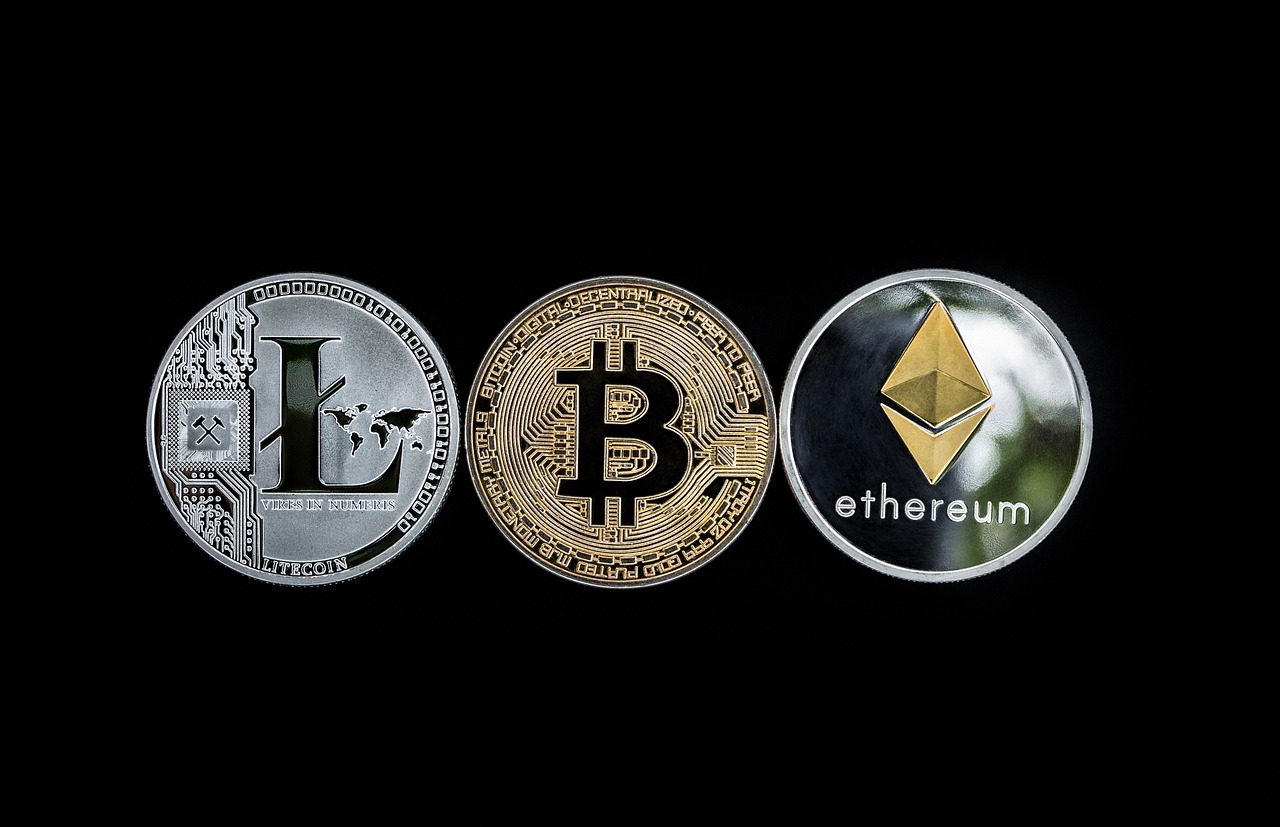
Importance of Backup
In the world of cryptocurrency, where the stakes are high and the digital landscape is ever-changing, the importance of backing up your wallet cannot be overstated. Imagine losing your entire life savings because of a hardware failure or a simple mistake. It’s a nightmare scenario that could happen to anyone, but with proper backup strategies, you can safeguard your digital assets against such unfortunate events. Regularly backing up your wallet ensures that you have a safety net in place, allowing you to recover your funds in case of theft, loss, or accidental deletion.
Backing up your wallet is akin to having an insurance policy for your digital assets. Just as you wouldn’t drive a car without insurance, you shouldn’t store cryptocurrencies without a backup plan. Most wallets provide a way to export or save your private keys and recovery phrases, which are crucial for accessing your funds. This information is your golden ticket; lose it, and you might find yourself locked out of your own wealth.
To make the backup process even more foolproof, consider the following best practices:
- Use Multiple Backup Locations: Don't put all your eggs in one basket. Store copies of your wallet backup in different physical locations, such as a safe deposit box, a secure drawer at home, or even with a trusted friend.
- Encrypt Your Backups: If you're backing up your wallet on a digital device, ensure that the backup files are encrypted. This adds an extra layer of security, making it harder for potential thieves to access your sensitive information.
- Regularly Update Your Backups: As you make transactions and change your wallet settings, remember to update your backups. An outdated backup could lead to significant losses if you ever need to restore your wallet.
Furthermore, many wallets offer recovery phrases, typically a series of 12 to 24 words, that can be used to restore your wallet on another device. It’s crucial to write this phrase down and store it in a secure place. Think of it as your wallet’s master key. If you lose access to your device, this phrase will be your lifeline, allowing you to regain control over your assets.
In summary, the importance of backing up your crypto wallet cannot be ignored. By implementing robust backup strategies, you not only protect your investments but also gain peace of mind. After all, in the unpredictable world of cryptocurrencies, a little preparation can go a long way in ensuring the safety of your digital fortune.
Q: How often should I back up my crypto wallet?
A: It’s recommended to back up your wallet every time you make a significant change, such as a transaction or a setting adjustment. Regular backups can help ensure you have the most current information.
Q: What should I do if I lose my backup?
A: If you've lost your backup and can't access your wallet, you may be unable to recover your funds. This is why it's essential to have multiple backup locations and to store recovery phrases securely.
Q: Can I back up my wallet on a USB drive?
A: Yes, backing up your wallet on a USB drive is a good option, but make sure to encrypt the drive to protect your sensitive information from unauthorized access.
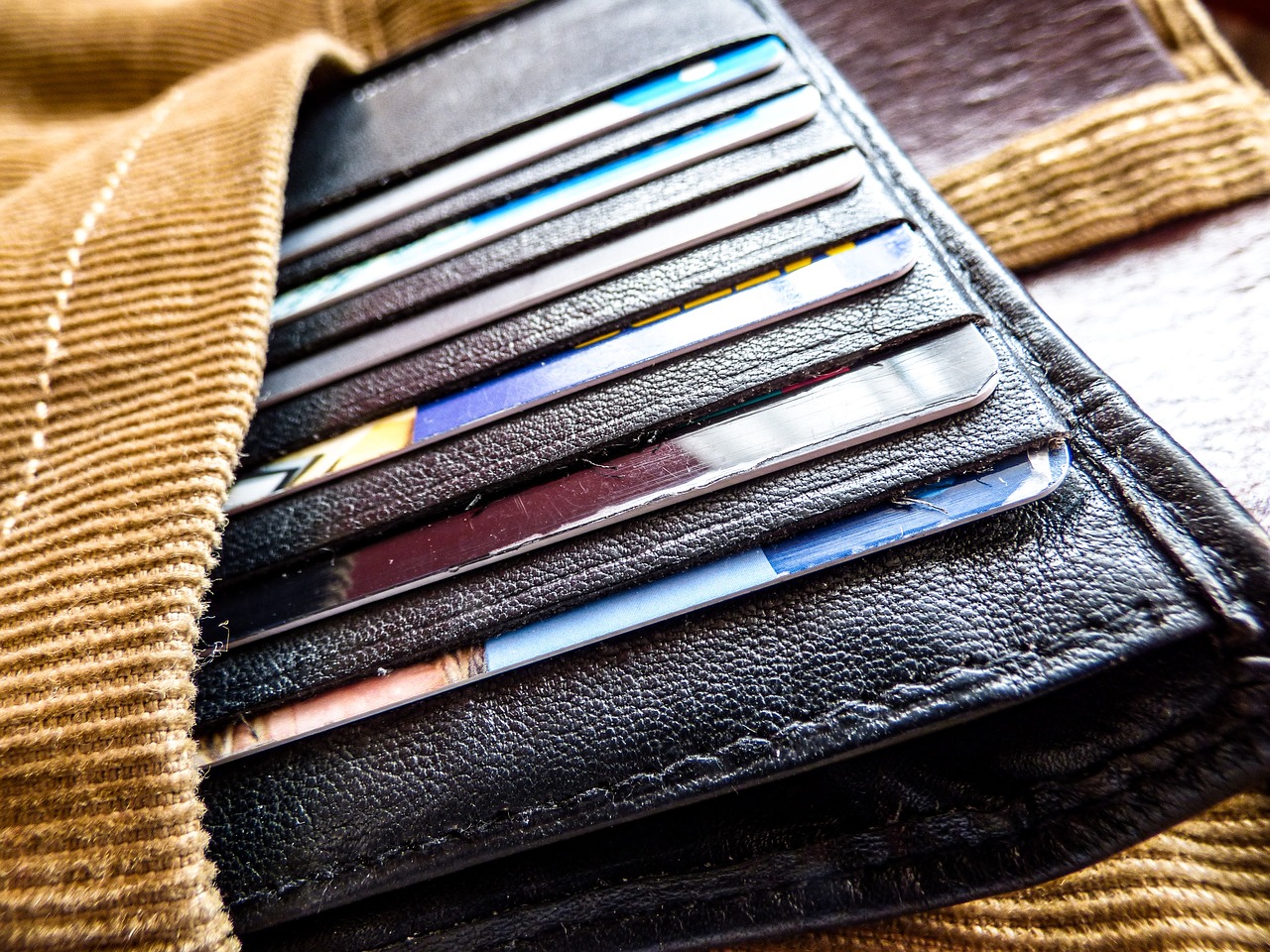
Wallet Features to Look For
When diving into the world of cryptocurrencies, choosing the right wallet can feel a bit like finding a needle in a haystack. With so many options available, how do you know which features will truly keep your digital assets safe? It's essential to look for specific functionalities that not only enhance security but also improve user experience. First and foremost, consider multi-signature support. This feature requires multiple private keys to authorize a transaction, adding an extra layer of security. Imagine needing a team of people to unlock a treasure chest—this is what multi-signature wallets do for your crypto.
Another important feature to look out for is recovery options. Life can be unpredictable, and the last thing you want is to lose access to your wallet due to a forgotten password or a lost device. Wallets that offer recovery phrases or backup options allow you to regain access to your assets, even in dire situations. Think of it as having a spare key to your house; it gives you peace of mind knowing you have a backup plan.
Additionally, a user-friendly interface is crucial, especially for those new to the crypto scene. A wallet that is easy to navigate can make a world of difference, turning a potentially overwhelming experience into a smooth ride. You wouldn't want to drive a complex car that takes hours to learn how to operate, right? The same logic applies to wallets—opt for one that feels intuitive and straightforward.
Lastly, always check for security features like two-factor authentication (2FA) and encryption protocols. These features are like the locks on your doors; they provide an essential layer of protection against unauthorized access. A wallet that prioritizes security will often have robust encryption methods to safeguard your private keys and sensitive information. Just like you'd want a solid front door to keep intruders out, your crypto wallet should have strong security measures in place.
In summary, when selecting a crypto wallet, keep these features in mind: multi-signature support, recovery options, a user-friendly interface, and strong security measures. By prioritizing these elements, you can significantly enhance the safety of your digital assets and enjoy a more secure crypto experience.
- What is a crypto wallet? A crypto wallet is a digital tool that allows you to store, send, and receive cryptocurrencies. It can be software-based, hardware-based, or even paper-based.
- How do I choose the right wallet? Consider factors such as security features, ease of use, and the types of cryptocurrencies you want to store. Look for wallets that offer multi-signature support and recovery options.
- Is it safe to keep my crypto in an exchange wallet? While it's convenient, exchange wallets are generally less secure than personal wallets. For long-term storage, it's recommended to use a personal wallet.
- What should I do if I lose my wallet? If you have backed up your wallet information or have a recovery phrase, you can use it to regain access. Always keep your recovery information secure and private.
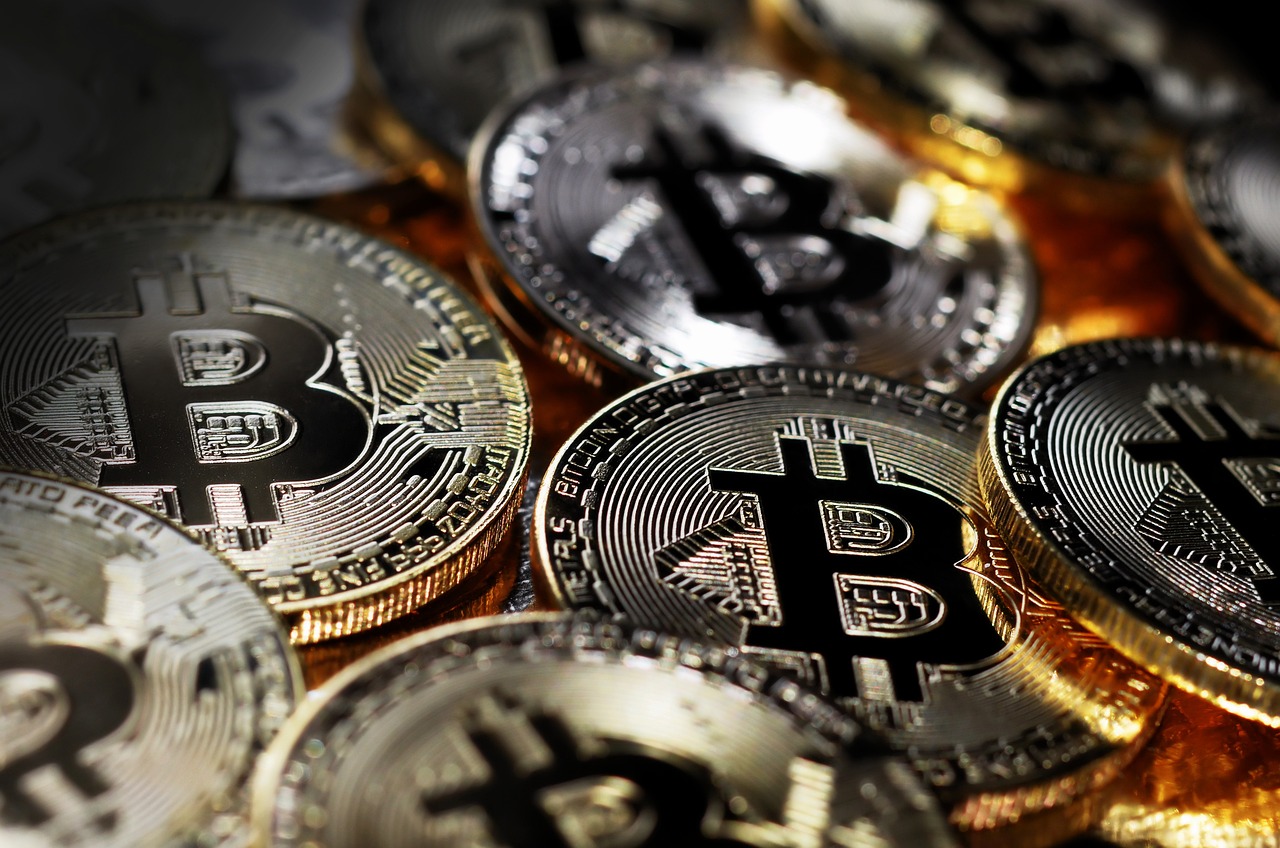
Common Crypto Fraud Schemes
In the ever-evolving world of cryptocurrencies, fraud schemes are unfortunately as dynamic as the market itself. Understanding these schemes is crucial for anyone venturing into the crypto space. Let's dive into some of the most common fraud tactics that can ensnare unsuspecting users.
One of the most notorious schemes is phishing attacks. These attacks often masquerade as legitimate communications from trusted sources, such as wallet providers or cryptocurrency exchanges. The fraudsters might send emails or create fake websites that closely mimic the real ones, tricking users into entering their sensitive information. Once they have your credentials, they can access your wallet and drain your assets in the blink of an eye. To protect yourself from phishing, always double-check URLs and never click on suspicious links.
Another prevalent scheme is the Pyramid and Ponzi schemes. These scams lure investors with the promise of high returns with minimal risk, often under the guise of a new cryptocurrency or investment opportunity. In a Ponzi scheme, returns are paid to earlier investors using the capital from newer investors, creating the illusion of a profitable venture. Eventually, the scheme collapses when there are not enough new investors to pay the returns, leaving many with significant financial losses. Recognizing the signs of these schemes—such as unrealistic promises and a lack of transparency—is vital for avoiding such traps.
To give you a clearer picture, here’s a table summarizing these common fraud schemes:
| Fraud Scheme | Description | Warning Signs |
|---|---|---|
| Phishing Attacks | Fraudsters impersonate legitimate entities to steal sensitive information. | Suspicious emails, fake websites, urgent calls to action. |
| Pyramid and Ponzi Schemes | Investment scams promising high returns with little risk, relying on new investors' money. | Unrealistic promises, lack of transparency, pressure to invest quickly. |
Additionally, there are other schemes like investment scams that often exploit the hype surrounding new cryptocurrencies. Scammers might create fake initial coin offerings (ICOs) or fake tokens, enticing investors to pour money into what turns out to be a nonexistent project. To avoid falling for such scams, always conduct thorough research and be skeptical of projects that seem too good to be true.
In conclusion, being aware of these common crypto fraud schemes is your first line of defense against potential scams. Knowledge is power, and by familiarizing yourself with these tactics, you can navigate the crypto landscape more safely. Remember, if something feels off or too good to be true, it probably is!
Q: What should I do if I think I've fallen for a scam?
A: If you suspect you've been scammed, immediately cease all transactions and contact your wallet provider or exchange. Report the incident to the authorities and consider monitoring your accounts for any unauthorized activity.
Q: How can I spot a phishing email?
A: Look for unusual sender addresses, poor grammar, generic greetings, and links that do not match the official website. Always verify through official channels before clicking on any links.
Q: Are there any tools to help protect against crypto fraud?
A: Yes! Using reputable security software, enabling two-factor authentication, and utilizing hardware wallets can significantly enhance your security against fraud.
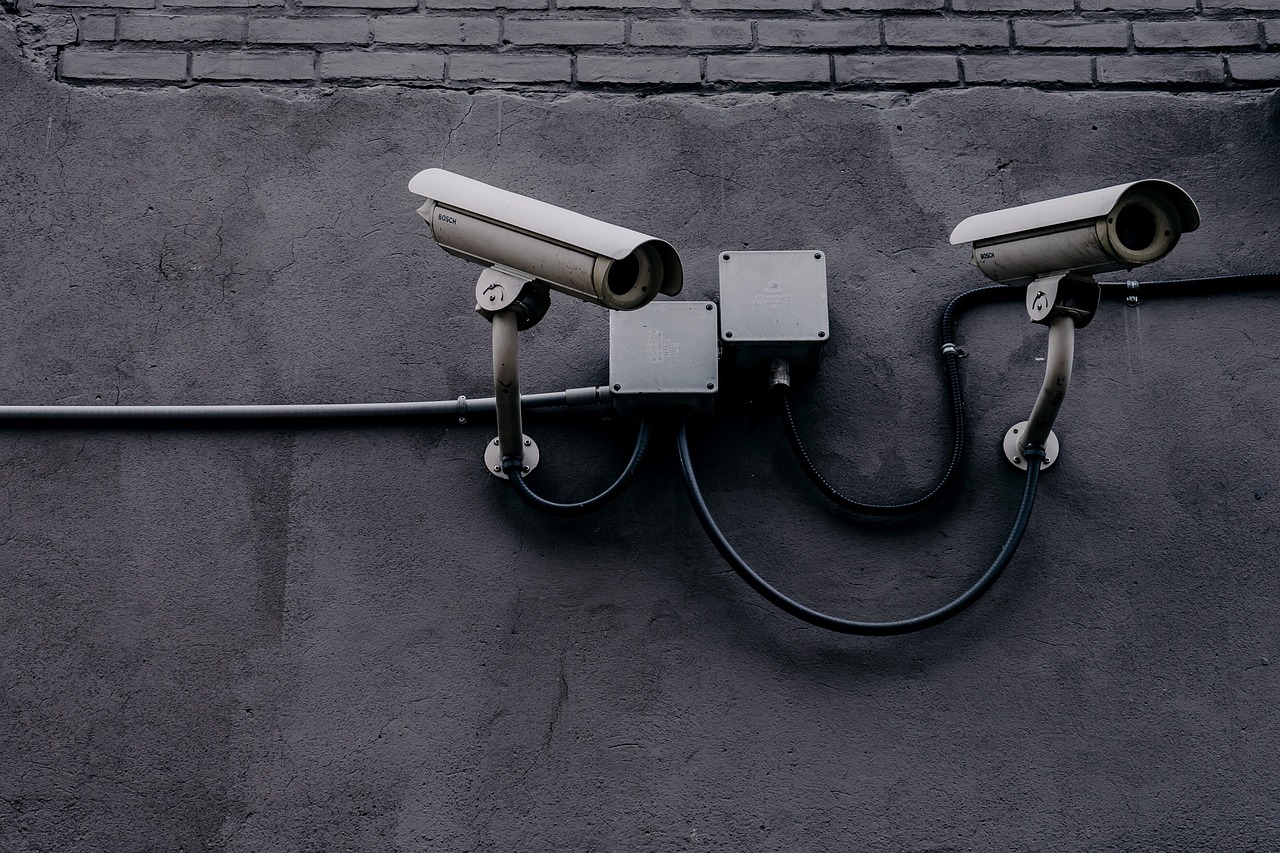
Phishing Attacks
Phishing attacks are a common and insidious threat in the cryptocurrency world. These attacks often masquerade as legitimate communications, tricking unsuspecting users into revealing their sensitive information, such as private keys or passwords. Imagine receiving an email that appears to be from your wallet provider, complete with official logos and urgent language. It urges you to verify your account or risk losing your funds. Before you know it, you've clicked on a link that leads to a fake website designed to capture your details. This is the essence of phishing—deceptive tactics that exploit trust to steal your hard-earned cryptocurrency.
To effectively combat phishing attacks, it's crucial to recognize the telltale signs of these scams. Here are some common indicators to watch out for:
- Suspicious URLs: Always check the website address. Phishing sites often use URLs that are slightly altered, such as "wallet-provider.com" instead of "walletprovider.com."
- Unusual Requests: Be wary of any request for sensitive information, especially if it comes unexpectedly. Legitimate companies will rarely ask for your private keys or passwords via email.
- Urgent Language: Scammers often create a sense of urgency to provoke hasty actions. Phrases like “act now” or “your account will be locked” are red flags.
Additionally, it's essential to employ some protective measures to safeguard your wallet against phishing attempts. Here are a few strategies:
- Use Two-Factor Authentication (2FA): This adds an extra layer of security, requiring not just a password but also a second form of verification.
- Verify Sources: Always verify the source of any communication before clicking on links or providing information. If in doubt, contact the service provider directly using official channels.
- Educate Yourself: Stay informed about the latest phishing techniques and scams. Knowledge is your best defense against these attacks.
In conclusion, while phishing attacks are a prevalent threat in the cryptocurrency landscape, being vigilant and informed can significantly reduce your risk of falling victim to these scams. Always approach unsolicited communications with caution, and remember that protecting your digital assets starts with good awareness and proactive security measures. By implementing these strategies, you can enjoy your cryptocurrency experience with greater peace of mind, knowing that you are taking steps to shield yourself from potential fraud.
Here are some common questions regarding phishing attacks in the crypto space:
| Question | Answer |
|---|---|
| What should I do if I suspect a phishing attack? | Immediately cease communication with the sender, do not click any links, and report the incident to your wallet provider. |
| Can I recover my funds if I fall for a phishing scam? | Unfortunately, once your private keys are compromised, it is usually impossible to recover your funds. Prevention is key. |
| How can I tell if an email is legitimate? | Check for spelling errors, unusual sender addresses, and verify the URL before clicking any links. If it seems off, it probably is. |

Pyramid and Ponzi Schemes
Pyramid and Ponzi schemes are notorious scams that have plagued investors for decades, and unfortunately, the world of cryptocurrency is no exception. These schemes lure individuals with the promise of high returns on investments, often claiming to be revolutionary financial opportunities. However, the reality is far less glamorous. In a Pyramid Scheme, participants earn money primarily by recruiting new members rather than from legitimate products or services. This creates a structure where only those at the top of the pyramid see significant profits, while the majority of participants lose their investments. Think of it as a game of musical chairs—there are always more people than there are seats, and when the music stops, the last ones standing are left empty-handed.
On the other hand, Ponzi Schemes operate on a similar principle but with a slightly different twist. In this scenario, returns for older investors are paid using the capital from newer investors, rather than from profit earned by the scheme. At first glance, it may seem like a legitimate investment opportunity, especially when early investors receive their promised returns. However, as the scheme grows, it becomes increasingly difficult to recruit enough new investors to sustain the payouts, leading to its inevitable collapse. This is akin to a house of cards—eventually, the structure becomes unstable, and when it falls, it takes everyone down with it.
Recognizing the red flags of these schemes is crucial for anyone venturing into the crypto space. Here are a few warning signs to watch out for:
- Guaranteed Returns: If something sounds too good to be true, it probably is. Be skeptical of promises of high returns with little to no risk.
- Recruitment Focus: If the emphasis is on bringing in new members rather than on a legitimate product or service, it’s likely a pyramid scheme.
- Pressure Tactics: Scammers often create a sense of urgency, pushing potential investors to make quick decisions without proper research.
By understanding the mechanics of Pyramid and Ponzi schemes, crypto enthusiasts can better protect themselves from falling victim to these fraudulent practices. Always conduct thorough research before investing, and remember that in the world of finance, if it sounds too good to be true, it usually is. Being informed and cautious is your best defense against these deceptive schemes.
What is the difference between a Pyramid scheme and a Ponzi scheme?
A Pyramid scheme relies on recruiting new members to generate profits, while a Ponzi scheme pays returns to earlier investors using the capital from newer investors, without any legitimate business activity.
How can I protect myself from these schemes?
Always conduct thorough research, be skeptical of guaranteed returns, and avoid investments that focus heavily on recruitment rather than product sales.
Are there legal consequences for running these schemes?
Yes, both Pyramid and Ponzi schemes are illegal in many jurisdictions, and those who operate them can face severe legal penalties, including fines and imprisonment.

Best Practices for Wallet Users
When it comes to securing your crypto wallet, following best practices is not just a suggestion; it's a necessity. In a world where digital assets are increasingly targeted by fraudsters, being proactive can save you from potential losses. One of the most fundamental steps is to keep your wallet software updated. Just like your smartphone or computer, wallet applications receive updates that patch vulnerabilities. Ignoring these updates can leave you exposed to attacks that exploit outdated software.
Another crucial aspect is the use of strong passwords. A good password is your first line of defense, so think of it as the lock on your front door. It should be unique, long, and complex, combining letters, numbers, and special characters. Consider using a password manager to help you generate and store strong passwords securely. Furthermore, enabling two-factor authentication (2FA) adds an extra layer of security. This means that even if someone manages to guess your password, they still need a second piece of information to access your wallet.
It's also wise to be cautious about the networks you use. Public Wi-Fi may seem convenient, but it’s like leaving your window open for intruders. Avoid accessing your wallet or making transactions over public networks. If you must connect to a public Wi-Fi, consider using a Virtual Private Network (VPN) to encrypt your data and keep your information safe from prying eyes.
Moreover, regularly backing up your wallet is essential. Imagine losing your wallet and having no way to retrieve your funds. By creating backups, you ensure that you can recover your assets in case of device failure or theft. Store these backups in multiple secure locations, such as an encrypted USB drive or a secure cloud service. This way, if something goes wrong, you have a safety net to fall back on.
Finally, be vigilant about phishing attempts. Scammers are constantly devising new tactics to trick users into revealing their sensitive information. Always double-check URLs before entering any personal details and be wary of unsolicited emails or messages that ask for your wallet information. If something seems off, trust your instincts and investigate further before taking any action.
In summary, protecting your crypto wallet is a multifaceted endeavor. By keeping your software updated, using strong passwords, enabling two-factor authentication, avoiding public Wi-Fi, regularly backing up your wallet, and staying alert for phishing scams, you can significantly reduce your risk of falling victim to fraud. Remember, in the world of cryptocurrencies, your security is in your hands!
- What is the safest type of crypto wallet?
The safest type of wallet is generally considered to be a hardware wallet, as it stores your private keys offline, making it less vulnerable to online attacks.
- How often should I update my wallet software?
It's best to update your wallet software as soon as updates are available to ensure you have the latest security patches and features.
- Can I recover my wallet if I forget my password?
If you have a backup of your wallet or if you’ve set up recovery options, you may be able to recover your wallet. However, without these, it can be challenging.
- Is it safe to use my wallet on public Wi-Fi?
Using your wallet on public Wi-Fi is risky. If you must, ensure you use a VPN to protect your data.
Frequently Asked Questions
- What are the different types of crypto wallets?
There are mainly three types of crypto wallets: hardware wallets, software wallets, and paper wallets. Hardware wallets are physical devices that store your private keys offline, providing a high level of security. Software wallets are applications or programs that can be installed on your computer or mobile device, offering convenience but potentially exposing you to online threats. Paper wallets involve printing your keys on paper, which can be secure if stored properly.
- How does wallet security work?
Wallet security primarily relies on encryption and private key management. Encryption protects your wallet data from unauthorized access, while managing your private keys is crucial to ensure they are not exposed to potential fraudsters. Always remember, your private key is like the password to your bank account; if someone gets it, they can access your funds!
- What is the difference between private and public keys?
Your public key is like your bank account number, which you can share with others to receive funds. On the other hand, your private key is your secret PIN that you should never share with anyone. Keeping your private key secure is essential to prevent unauthorized transactions and fraud.
- What are some best practices for key management?
To enhance your wallet security, consider these best practices: use strong passwords, enable two-factor authentication, and never share your private keys. Additionally, regularly update your wallet software to protect against vulnerabilities and potential fraud.
- Why is backing up my wallet important?
Regularly backing up your wallet information is like having an insurance policy for your crypto assets. If your device is lost, stolen, or damaged, having a backup allows you to recover your funds, minimizing the risk of losing them to fraud or technical issues.
- What features should I look for in a crypto wallet?
When selecting a wallet, consider features such as multi-signature support, which requires multiple approvals for transactions, and recovery options in case you lose access. A user-friendly interface can also enhance your experience, making it easier to manage your assets securely.
- What are common crypto fraud schemes?
Common crypto fraud schemes include phishing attacks, where scammers trick users into revealing sensitive information, and Pyramid or Ponzi schemes, which promise unrealistic returns. Being aware of these tactics is crucial to protecting your investments.
- How can I avoid phishing attacks?
To avoid phishing attacks, always double-check URLs, avoid clicking on suspicious links, and never share your private information. If something seems too good to be true, it probably is! Stay vigilant and protect your assets.
- What should I do to keep my wallet safe?
To keep your wallet safe, regularly update your software, avoid using public Wi-Fi for transactions, and use strong, unique passwords. It's essential to stay informed about the latest security practices in the crypto space to mitigate the risk of fraud.

